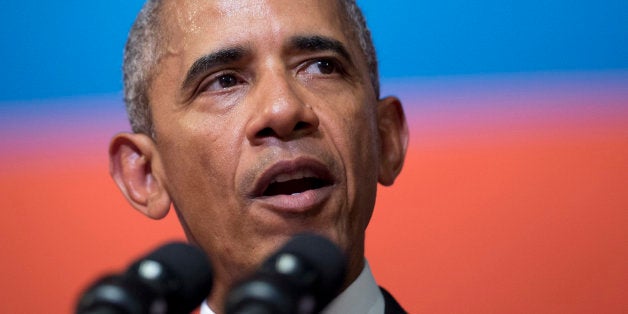
In pledging $90 million in bomb clearance initiatives last week while visiting Laos for the U.S.-ASEAN summit, Barack Obama Jr. became the first U.S. president to acknowledge the effects of the secret war that was waged by the United States as an extension of the Vietnam War from 1960-1975.
Mr. Obama told an audience that Laos had more ordinance dropped on it than on Germany and Japan during World War II and that "villages and entire valleys were obliterated," and "countless civilians were killed. That conflict was another reminder that, whatever the cause, whatever our intentions, war inflicts a wrenching toll, especially on innocent men, women and children."
Obama's remarks directly counteract the historical revisionism about Vietnam that took root after the war epitomized by President Jimmy Carter's claim that the destruction "from the war was mutual," and Ronald Reagan's that "ours was in truth a noble cause."
This is very important, however, Obama paradoxically used his visit to Laos to reaffirm commitment to the Asia pivot strategy, whose centerpiece is an expanded military presence that threatens a new arms race and potential proxy war on the Asian continent with China.
The secret war also actually provides a template for the Global War on Terror which Obama has championed through his eight years in office.
The U.S. pioneered weapons systems in Laos such as drone surveillance and electronic ground censors connected to computerized bomb targeting centers that are a feature of the so-called revolution in military affairs guiding U.S. operations in the Middle East.
The U.S. government strategy in Laos was to subcontract counterinsurgency to proxy forces and rely heavily on Special Forces units and air power in the absence of regular ground troops while censoring media coverage. The manipulation of public opinion was epitomized by the fabrication of a story of a North Vietnamese invasion, during the monsoon season no less, when the roads were actually impassable.
The United States began waging war in Laos after the Eisenhower administration staged a coup d'états following 1958 elections in which the pro-communist Pathet Lao won a majority of seats.
To circumvent the 1962 Geneva Conventions prohibiting foreign interference in the country and get around the woeful performance of the Laotian army, the CIA created its own clandestine army among the Hmong whom legendary CIA agent Edward Lansdale considered "splendid fighting men."
In 1964, bombing operations commenced targeting Pathet Lao strongholds in the north and supply routes along the Ho Chi Minh trail that benefitted South Vietnam's National Liberation Front (NLF).
Monteagle Stearns, deputy chief of mission in Laos from 1969 to 1972 told Congress that the U.S. rapidly escalated its bombing after President Lyndon B. Johnson had ordered a halt over North Vietnam in November 1968. "We had all those planes sitting around and couldn't just let them stay there with nothing to do."
The extent of the bombing would likely never have been known if not for Fred Branfman, an International Voluntary Service (IVS) worker with a deep affection for the Lao people who stumbled upon refugee camps and interviewed survivors for his 1972 book Voices From the Plain of Jars: Life Under an Air War.
Branfman included in the book drawings by Lao farmers who survived by living in underground caves and had many of their loved ones killed. The drawings were juxtaposed with the testimonials of U.S. pilots fixated with padding their kill totals and who knew little about Laotian society.
Branfman wrote that "If the Nazi activities represented a kind of apex to an age of inhumanity, American atrocities in Laos are clearly of a different order. Not so much inhuman as a-human. The people of Na Nga and Nong Sa were not the object of anyone's passion. They simply weren't considered. What is most striking about American bombing in Laos is the lack of animosity felt by the killers to their victims. Most of the Americans involved have little if any knowledge of Laos or its people. Those who do rather like them."
These comments have unfortunate resonance in the present day where the Laos model of detached, mechanized covert and proxy war is again being waged in dozens of countries now under the rubric of the Global War on Terror.
Fred Branfman died of Lou Gehrig's disease in 2014, though if he were alive today he would be happy that a sitting president has gone to Laos and belatedly acknowledged the terrible consequences of America's secret war.
However, Mr. Branfman would also be aghast that the methods of the secret war are being continuously adopted elsewhere. And he would suggest that if Obama really wants to honor the Laos victims, he should cease creating more war victims and urge his successor to do the same.
